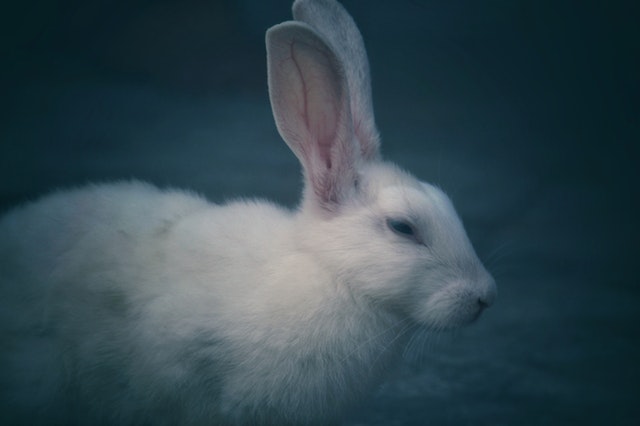
When the sun sets, that’s when you see them: wild rabbits. Exploring, playing and looking for adventure. These cute animals show up at dusk and begin their daily activities. Where are they in the morning? They’re awake and active! Were they up all night?
Contents
Because wild rabbits are mostly seen in the early evening and morning hours, many people believe they are nocturnal. But surprisingly, wild rabbits aren’t actually nocturnal at all!
The Amazing Crepuscular Rabbit!

Rabbits, both wild and domesticated, are naturally crepuscular. This big word means they are active in the early morning and evening hours. When people see this, they sometimes think that wild rabbits are up all night when that isn’t what’s happening at all! It’s isn’t just rabbits, lots of different animals live the same way: mice, squirrels, skunks, and foxes, to name a few. All of these animals are mainly active when the sun is either rising or setting.
It can sometimes be hard to see this in our domesticated rabbits. Our fluffy pets have become familiar with human schedules and don’t always get super active at dawn and dusk. Sure, pet rabbits sometimes get a little more active in the mornings and evenings. But living with humans in safe, climate-controlled houses, has taken them far from their wild origins.
If we want to know why wild rabbits are crepuscular, we need to look at how their life works out in the wild!
How Being Crepuscular Helps Wild Rabbits
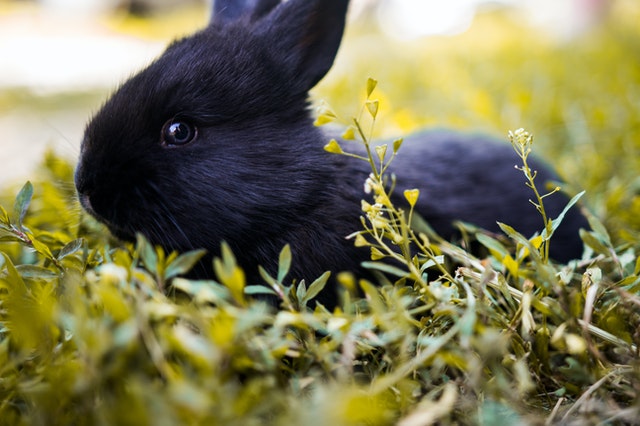
Domesticated rabbits have it easy: good food, clean water, and friendly people to pet them. But most importantly: no predators. Wild rabbits need to watch their backs. They don’t have claws or fangs, and can’t defend themselves against other animals that want to eat them. The only thing they can do is hide. Wild rabbits have perfected hiding from their many predators.
What kind of animals would want to eat an adorable wild rabbit? Plenty: a wild rabbit’s two main predators are hawks and owls. Other predatory animals also have a taste for bunnies. Over time wild rabbits evolved to be crepuscular. This gives them a distinct advantage over certain types of predators.
Owls, for instance, hunt mainly at night and can’t see well at dusk, dawn or in the daytime. On the other hand, hawks hunt during the day and can’t see well at dusk, dawn or at night. A wild rabbit’s crepuscular nature lets them be active during the time with both of their main predators can’t see as well. This gives them a window of time where they can find food and be active without having to worry about some of their many predators.
Predators aren’t the only reasons that an animal might evolve to be crepuscular. Some wild rabbits live in very hot climates. Here, daytime temperatures can climb to dangerous levels. A rabbit in this environment is under threat from both daytime predators and the heat! In hot climates being active only at dawn or dusk gives wild rabbits a way to stay cool, and also avoid other dangerous daytime or nighttime threats.
Wild rabbits are crepuscular, but this word covers two different types of low light behavior in animals: vespertine and matutinal. Vespertine is a word used in zoology when animals get active at dusk. Matutinal is similar but means animals become active at dawn. Wild rabbits do both.
All rabbits, including wild ones, have specialized eyesight that help them see in dim lighting. They can’t see when it is pitch black but have a great low light vision. Wild rabbits see in dim light about twice as well as humans.
Because wild rabbits aren’t nocturnal, they don’t need eyes that allow them to see all hours of the night. Cat eyes have a reflective part that most of us have seen flashes of at night. This special eye design lets cats see extremely well even in mostly dark environments. Wild rabbits don’t have this. Rather, their eyes are made specifically to see in the low light of dawn and dusk.
The Dim World of Wild Rabbits
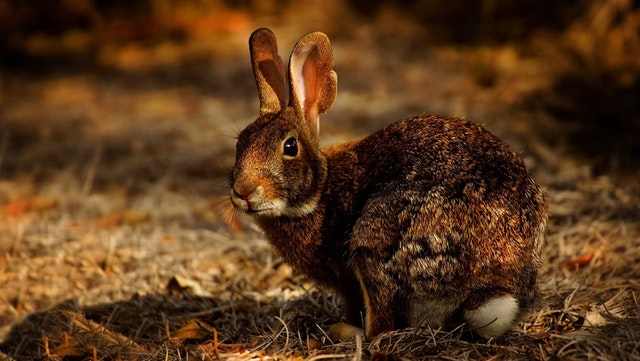
Wild rabbits aren’t fully nocturnal, but they still need to get lots done. Being crepuscular means they have to plan their days and nights carefully. Most of their outdoor activities need to be finished while the day’s light is dimming or in the early morning before the sun fully rises. This gives them the greatest protection from predators while taking advantage of their ability to see in dim light.
Mornings are the best time for eating fresh growth. Wild rabbits come out of their burrows after a night of avoiding nocturnal predators like owls. They eat as much as possible during this period before the sun fully rises. It is important for rabbits to do as much as they can because they have a limited amount of time before the sun fully rises and they are threatened by daytime predators like hawks.
During the day, wild rabbits go back into hiding. Their burrows protect them both from predators and the extreme heat of the day. In hot climates, this can be a huge advantage because of the punishing temperatures during the daytime hours.
When the sun begins to set, wild rabbits have another chance to explore and search for food. Temperatures begin to cool and the waning light throws off daytime predators which aren’t able to see as well in the lower lighting. Just like morning, dusk gives rabbits a few hours of free movement before they need to start worrying about nocturnal predators.
During dusk, wild rabbits have a chance to forage for food and socialize with other bunnies. But the clock is ticking: soon it will be evening and nighttime predators like owls can start using their excellent low light vision to begin hunting. Just like in the morning, dusk gives wild rabbits a few hours of freedom to roam outside before predators become active. They can use this time to feed before they need to return to their burrows for protection.
Wild rabbits have a great advantage in being crepuscular instead of nocturnal. It might seem like they would have more time to feed if they were able to see best in full darkness or the brightest light. But many predators are most active during these two periods of the day. Wild rabbits’ ability to see well in dim light lets them avoid a wide range of predators while still being able to find food and live in the natural world outside of their burrows and hiding places.
Wild Rabbits and Domesticated Rabbits
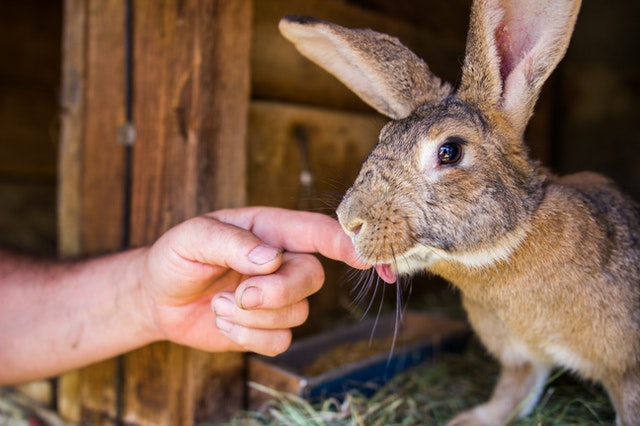
Wild Rabbits aren’t that different from the fluffy domesticated rabbits we humans keep as pets. While a fluffy pet rabbit doesn’t need to worry about feeding in the dusk and dawn hours to avoid predators, the evolutionary programming is still there. Just like wild rabbits, pet rabbits can get active in the early morning or in the early part of the evening.
Some pet rabbit owners wonder why their cute companions are so excited in the early morning and evening but can sleep most of the day and night. The answer to this question comes from wild rabbits and their ability to see well in changing light conditions. A pampered domesticated rabbit will never have to worry about eating as much as possible before needing to hide from owls or hawks. But they will naturally become active during the same times as their cousins in the wild.
This is why it is best to avoid disturbing pet rabbits during the daytime and nighttime hours when they tend to sleep. Rabbits aren’t nocturnal, but they aren’t fully active in the daytime either. They have a natural rhythm that comes from the need to avoid predators in the wild. Pet rabbits that sleep for hours at night aren’t unusually sleepy, they are just doing what comes naturally.
This is also the reason pet rabbits do best with strict mealtimes. Dawn and dusk aren’t just when they are most active, it is also when they expect to find food. It is ideal to let them eat when they like to and sleep when they need to. Domesticated rabbits, like wild rabbits, aren’t nocturnal. They really do sleep at night for the most part.
Wild rabbits don’t always sleep during the times they are hiding in their burrows. They have things to do while avoiding predators, and sleeping is only one of those things. Wild rabbits, like their domesticated cousins, spend much of their time in hiding being drowsy: not sleeping deeply but not fully awake. If you were hiding from predators for hours at a time, you’d probably sleep a lot too!
Conclusion
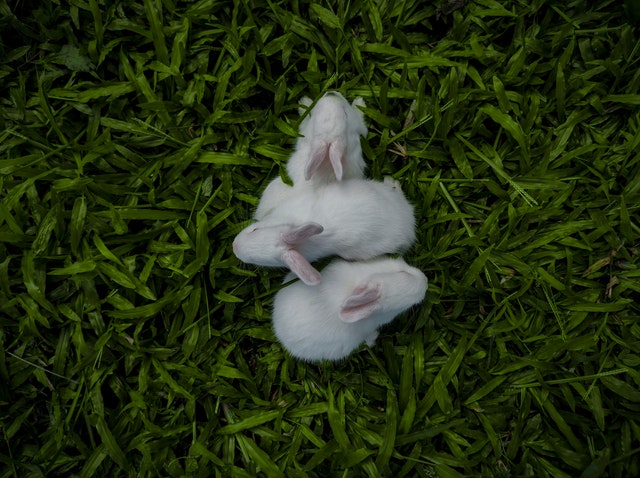
We hope this has answered your questions about whether or not wild rabbits are nocturnal. The simple answer is no, but the reality is a bit more complicated. Knowing this information can help you understand domesticated rabbits and how their unusual schedules got started.
Being safe and well-fed doesn’t override a pet rabbit’s natural programming. There are good reasons why our fluffy companions behave the way they do!





